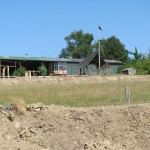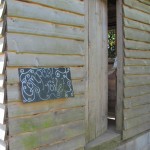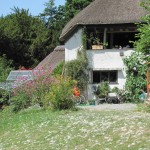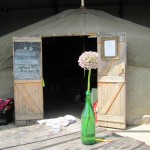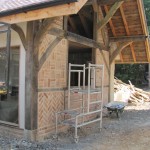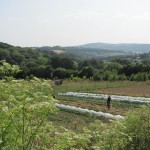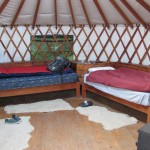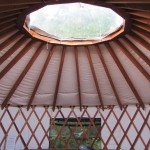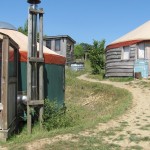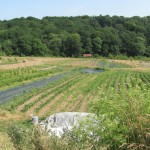The Embercombe Experience
Yesterday we traveled a mere thirty minutes outside of Exeter’s city center to the sustainable community of Embercombe. Thirty minutes, though, might as well be three hundred miles because upon arriving in Embercombe, you feel as if you’ve entered a sort of Utopian Eden. Mac, the visionary and director of the “sustainable living experiment,” has created a sprawling fifty acres of woodlands, woodshops, food gardens, horse stables, chicken pens, yurt villages, and gathering places in an effort to re-connect people to the earth. For years, Mac worked in the corporate world as a leadership consultant for large companies. After helping a pair of disillusioned corporate successes, they wrote him a check to realize a vision he had described as “a garden which grows people.” It was then that Embercombe was born. The large property was purchased and transformed from empty fields with a lake and an airplane hanger and airstrip to the community present today.
Embercombe’s current focus is on providing educational and inspirational retreats for any one from school-aged children to corporate teams. They hope to encourage a focus on sustainability in daily lives as well as business practices. The Embercombe community is made up of volunteers who stay for months at a time to apprentices who stay for at least a year to Mac, his wife and a few other couples who have lived their nearly since its founding in the 1990s. Everything at Embercombe is homemade, homegrown and organic. Animals are treated with respect, and if meat is eaten at all, it is done so with much ceremony. Two Dartmoor ponies reside at Embercombe and have been encouraged to contribute through a training method which focuses on an animal’s trust and willingness to complete a task. Residents all share responsibilities from cooking to building to gardening. In addition, Embercombe is expanding. Their building worksite will create more gathering space for visiting groups, dining areas, and kitchens for cooking and concocting soaps and remedies from the medicine garden. The buildings are being built with reused materials from demolitions and with ancient techniques like lime plastering (a mixture of horse hair and lime for the interior walls) and cobb walling (a mixture of local clay, hay, sand and water which forms a strong, efficient exterior wall). Composting toilets and reed bed filtration systems are also present on site which allow the lake to stay pure enough for swimming any day.
The workers of the construction site are also unique. Most are ex-convicts who have been giving a second chance at Embercombe to learn new skills, earn a living, and break life-long hurtful habits. There are success stories from this program from junior offenders to men who have served fifteen years or more.
- Embercombe Main Building (old hangar)
- The Compost Toilet
- Embercombe’s Lake
- An Original Cobb House: used for permanent Embercombe residents
- The Eating Yurt
- Tunduk of the Eating Yurt
- Exterior of the New Buildings
- Farmed Fields
- Our Cozy Yurt
- The Domed Window of our Yurt (ceiling)
- Yurt Village
- Vegetable Fields
After touring the entire area and talking about its mission, we partook in a beautiful garden dinner with freshly caught mackerel, tortilla (Spanish omelette), olives, antipasto salad, homemade bread, Embercombe cider, garlic aioli, and fried zucchini (courgette in the UK). Eating at a ten foot wooden table in the middle of a beautiful garden was magical enough, but to be surrounded by such a diverse and passionate group of people with children playing in the background was perfectly idyllic.
That night, we retired to our beautiful yurt accommodations which have convinced me of the functionality of the ancient dwellings. The experience of using the compost toilet was certainly interesting, and I must say I am not the best at it, but put forth a valiant effort (I don’t quite have a grasp on the separate chambers and how to move the “toilet” from one to the other).
I now have a full understanding of the beauty of living off of and being connected to the land. Our lectures this morning on leadership and sustainability within social contexts took on greater meaning because of my Embercombe experience. If only everyone could visit such a place, I think views on “going green” would change greatly as people realized the importance of what could be lost.
Ending the day with a walk through historic Exeter sites, including St. David’s church completed an interesting and filling past two days.
